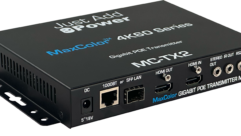Coming Home to Windows Home Server, Part 14
Feb 2, 2009 8:25 AM,
By Eric B. Rux
Read More:
Coming Home to Windows Home Server Series
In Coming Home to Windows Home Server Part 6, I told you about five of my favorite Windows Home Server Add-ins. What’s an add-in? An Add-in is a small piece of software that adds additional functionality to your Windows Home Sever (WHS). Some software companies have written add-ins to support their specific software, but WHS enthusiasts have created a whole slew of free add-ins that you can download and use for free. You can find a nice list of free add-Ins at the We Got Served website.
To install an add-in, copy the file or files that you downloaded (It should have a .MSI extension) to your WHS server’s Add-ins folder (\serverSoftwareAdd-Ins). Log on to the WHS console and choose Settings in the upper-right corner. Click Add-ins in the left panel.
This time, the list is in no particular order as these are all really great tools:
LogPoint
Have you ever scratched your head, wondering what your Windows Home Server was doing? LogPoint takes the guess work out of that question and shows you which components in your server are busy. For example, you can monitor the processor, memory, disks, network, even an individual process (program). Using a tool like this is usually the first step in determining why you are having performance issues.
WHS Backup Database-Backup (WHSBDBB)
When Microsoft released Power Pack 1 for Windows Home Server, they included a new backup the server” feature. The WHSBDBB add-in provides some added protection to the client backups stored on the Windows Home Server. You can duplicate the client backup database on the WHS, and/or back it up to another (removable) drive for safe keeping. This might seem like overkill for the average household, but if you are using a Windows Home Server in a small-business setting, this added protection can help you sleep at night. Keep in mind that these backup databases are huge and can take a long time to copy.
Router Control
In order to setup Remote Access, your router (the device that connects your computer(s) to the Internet) needs to be configured. Windows Home Server does a pretty good job of setting up most home routers, but the Router Control add-in is supposed to do an even better job. Personally, I like this add-in for its cool graph of my network traffic. Codeplex has a nice screen shot of what the graph looks like.
Grid Junction
To help protect your Windows Home Server investment, it’s a good idea to install a battery to keep the juice flowing in case you lose electrical power. These special batteries are called Uninterruptable Power Supplies (UPS), and they are available at stores that sell computer hardware. Having a battery, however, is only half of the battle: Once you lose power, you still need to safely power down your Windows Home Server to prevent possible data corruption. Most UPS manufacturers come with basic software that allows the UPS to notify the server when power has been lost, and then gracefully power down the server. Grid Junction performs a similar task, but unlike the software that comes with your UPS, Grid Junction was written specifically for Windows Home Server.
Lights Out
If you live in an area with expensive electrical power (or are just trying to be environmentally friendly), you probably do not like the idea of keeping your computer, let alone your Home Server, powered on 24/7. Martin Rothschink wrote an add-in that lets you put your Windows Home Server into suspend or hibernation when it isn’t being used, or on a set schedule. The server will power back on when a backup is scheduled to start, or on a predefined schedule. This add-in is free to download, but if you find useful, you may donate a little money.
Some of these add-ins have special prerequisites or specific settings in order for them to function properly, so be sure to read the documentation thoroughly.
If you are a programmer and interested in creating your own add-in, then take a look at the WHS Software Development Kit (SDK). Be sure to drop me an email if you create something really cool. Have you found an add-in that you have found really useful? Let me know. I’d love to hear from you.
Until next month, have fun with your Windows Home Server.










